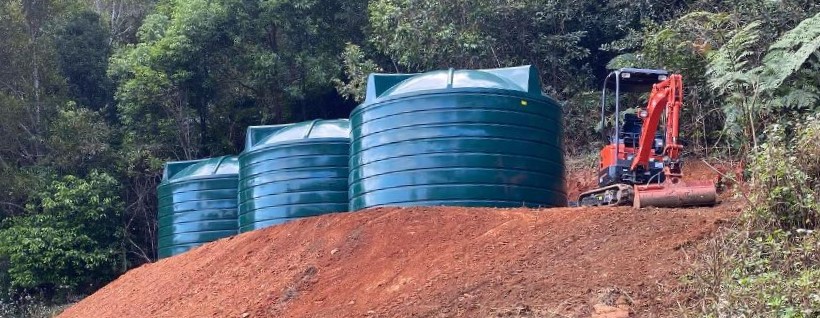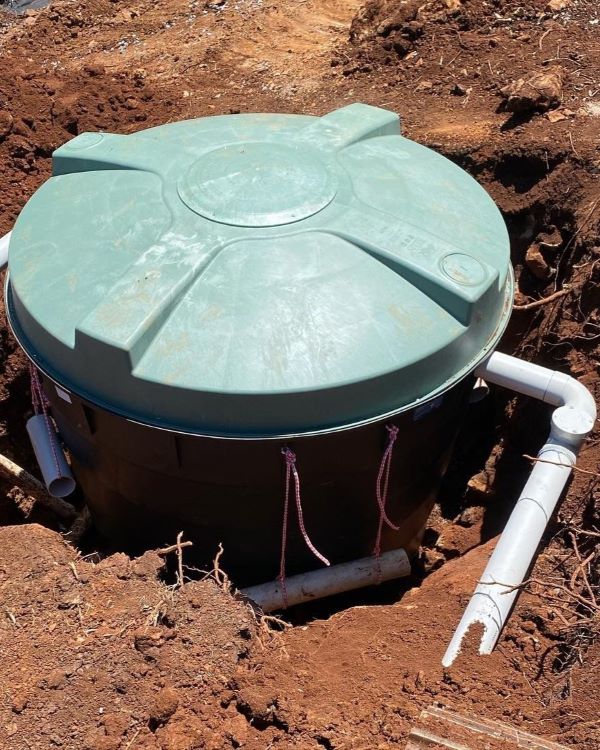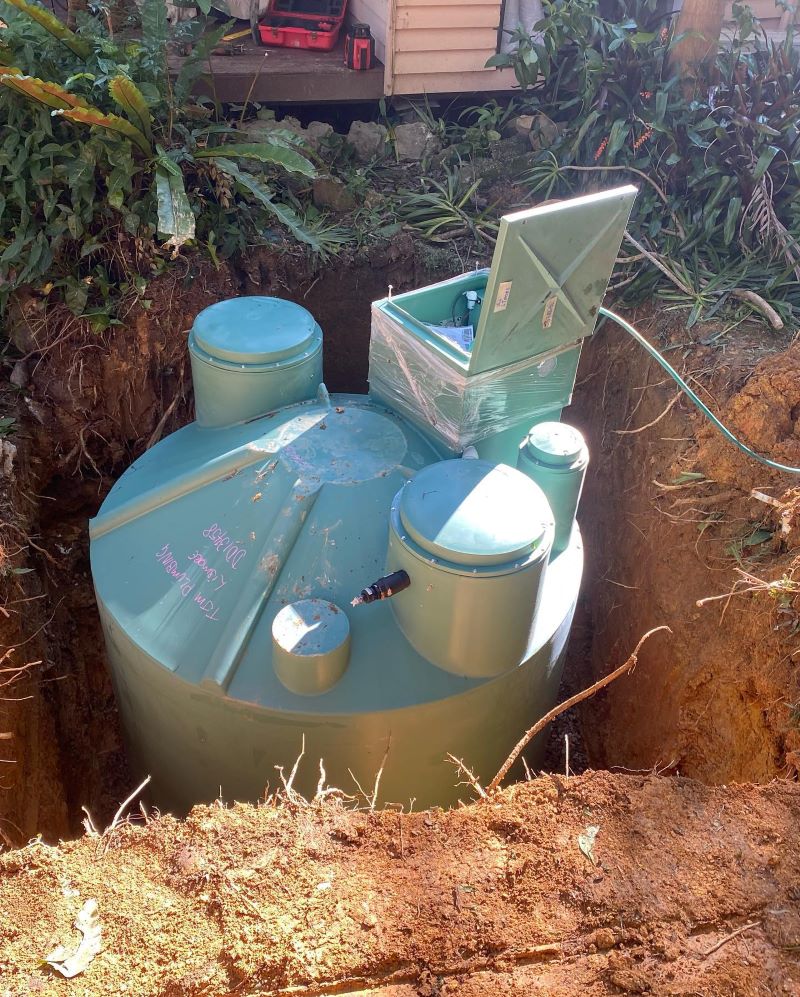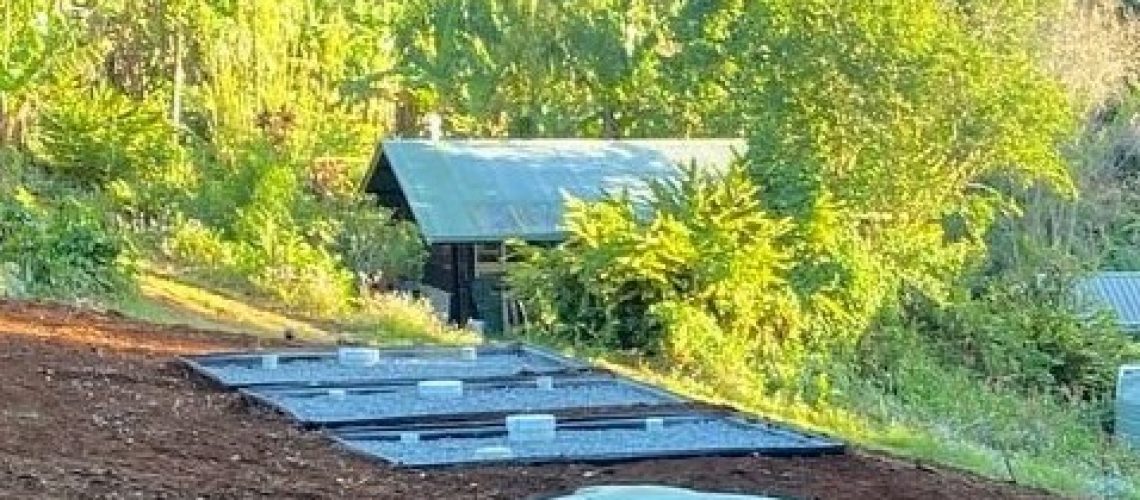Are you a homeowner in Byron Bay, Cabarita Beach, or Mullumbimby seeking expert septic tank services? Then Zen Plumbing is your trusted local partner for all your septic tank needs. From routine maintenance to emergency repairs and system upgrades, we’ve got you covered. In this comprehensive guide, let’s look into the vital aspects of septic tank care to ensure your system functions efficiently and complies with local regulations.
Understanding the Importance of Regular Pumping and Cleaning
Do you know?
- Household septic tanks are generally pumped every three to five years.
- Average household septic systems need professional inspections every three years.
- Alternative systems with mechanical components should be inspected annually and often require service contracts.
- The frequency of pumping depends on household size, wastewater volume, solids in wastewater, and septic tank size.
As a trusted plumber in NSW, we understand the crucial importance of regular septic tank pumping and cleaning. Neglecting this can lead to a range of issues, from foul odours to system failure, which is something none of us want to deal with.
Signs Your Septic Tank Needs Pumping and Cleaning
Recognising the signs that your septic tank is due for pumping and cleaning is your first line of defence against potential problems.
- Slow Drainage: When you notice that water takes longer to drain from sinks, showers, or toilets, it’s a signal that your septic tank might be due for maintenance. This happens because the tank is filling up, leaving less space for wastewater.
- Gurgling Noises: Have you ever heard strange gurgling or bubbling sounds in your plumbing? This could be a sign of excessive solids or a clog in your septic system. It’s a clear indication that something needs attention.
- Foul Odours: If your nose detects unpleasant odours in your yard or inside your home, it’s a strong indication that your septic tank is overwhelmed. These odours can result from gases escaping due to the lack of capacity to treat the wastewater effectively.
- Standing Water in the Drainfield: A soggy or waterlogged drainfield is a red flag. This typically occurs when the septic tank is so full that it can’t effectively disperse the treated effluent into the soil. The excess water can also carry solids and contaminants, posing a potential health and environmental hazard.
Think of it as emptying the trash in your house; you can’t let it overflow, or you’ll have a mess to deal with. Similarly, you can’t let your septic tank reach a point where it’s overwhelmed with solids and scum.
When that happens, it not only threatens the proper functioning of your septic system but can also lead to costly repairs and environmental hazards.
Everything that enters your drains be it through flushing, garbage disposal, or sink, shower, or bath runoff, ultimately finds its way into your septic system. The substances that go down your drain significantly impact the efficiency of your septic system.
Remember, Your Septic System Isn’t a Garbage Can:
It’s important to understand that your septic system isn’t designed to handle just anything. As a simple guideline, refrain from flushing anything other than human waste and toilet paper.
Avoid flushing
- Cooking grease or oil
- Non-flushable wipes, including baby wipes and wet wipes
- Photographic solutions
- Feminine hygiene products
- Condoms
- Dental floss
- Diapers
- Cigarette butts
- Coffee grounds
- Cat litter
- Paper towels
- Pharmaceuticals
- Household chemicals like gasoline, oil, pesticides, antifreeze, paint, or paint thinners
By staying vigilant and scheduling regular maintenance, you’ll ensure that your septic system operates smoothly while also safeguarding your property and the environment.
The Pumping and Cleaning Process
When it’s time to pump and clean your septic tank, contact us. We start by locating your septic tank and carefully removing the lid. The tank’s contents will be pumped out, and any accumulated sludge and scum will be cleaned. This process is vital for maintaining your septic system’s capacity and efficiency.
Is it Necessary to Pump my Septic Tank?
If you’ve never had your septic tank pumped and you haven’t experienced any issues, there are a few possible explanations:
- Low Water Usage: It’s possible that your household has minimal water usage, and the septic tank’s size and natural biological processes are effectively managing the solids. This scenario is unusual but may happen when there are only one or two people living in the home.
- Tank Leak: There’s a chance that your septic tank has a leak, causing wastewater to discharge into the ground instead of the drainfield.
- Slow Solid Accumulation: The tank might be accumulating solids slowly, and over time, these solids could potentially block the drainfield. This situation could increase the cost of pumping the tank and might even necessitate replacing the entire drain field if it becomes clogged. Regular maintenance can help prevent such issues.
Septic Tank Maintenance Tips for NSW Homeowners
We always emphasise that regular maintenance is key to avoiding costly repairs and ensuring your septic system’s longevity. Follow these tips to keep your system in top shape:
- Avoid the excessive use of germicides, such as strong detergents, disinfectants, toilet cleaners, and bleaches, as they can kill the beneficial bacteria that are essential for septic tank operation.
- Opt for soapy water when cleaning toilets and other fixtures, as it is less harmful to the septic system.
- Choose detergents with low alkaline salts and chlorine levels to maintain the health of your septic tank.
- If you notice odours during or after installation or after the addition of a large quantity of germicide, try flushing a cup of lime down the toilet daily until the odours dissipate.
- Refrain from using proprietary or chemical additives for your septic system, except for the occasional use of lime to address odours.
- Never flush sanitary napkins or disposable nappies into the system, as they can cause blockages and disruptions.
- Minimise the introduction of oil and fat into the septic system to prevent clogs and maintain proper functioning.
- Use a sink strainer to prevent food scraps from entering the septic system, and avoid the use of garbage disposal units.
- When sludge is removed from a septic tank, about 10% of the original contents should be kept in the tank to help an appropriate bacterial population regenerate for ongoing treatment.
- When starting or after desludging the tank, fill it with water to reduce odours. Avoid washing or disinfecting the tank after desludging.
- Ensure that neither the tank nor the disposal field is constructed over or disturbed in any way.
- Conduct an annual inspection of the system and follow the council’s guidance to desludge the tank at least once every three years or as directed.
So be Mindful of What Goes Down the Drain, Conserve Water, Schedule Inspection, Divert Surface Water and Use Septic-Safe Products.

Emergency Measures for Septic Tank Issues
We understand that sometimes emergencies happen. In the event of a septic tank emergency, such as sewage backup or foul odours, it’s crucial to know how to react. Contact us immediately for assistance. However, in the meantime, you can take some measures:
- Limit Water Usage: Avoid using water unnecessarily during an emergency. This will help prevent further stress on your septic system.
- Avoid Flushing or Draining Anything: During an emergency, refrain from flushing toilets or draining any water into the system. This will help prevent further damage and backups.
Septic Systems: Adopt Smarter Ways
In a standard single-family home, each person can use up to 70 gallons of water daily. Even a minor issue, like a leaking toilet can waste up to 200 gallons of water daily.
All the water that a household drains eventually reaches the septic system. The less water a household consumes, the lighter the load on the septic system. Efficient water usage enhances septic system performance and lowers the chances of problems.
Simple Ways to Save Water:
- High-Efficiency Toilets: Older toilets can use a lot of water, with reservoirs holding 3.5 to 5 gallons. Opt for high-efficiency toilets that use 1.6 gallons or less per flush. This straightforward upgrade significantly cuts down household water consumption and eases the load on your septic system.
- Faucet Aerators and High-Efficiency Shower Heads: Installing faucet aerators, high-efficiency shower heads, and shower flow restrictors is an effortless way to reduce water usage. These products effectively minimise the volume of water that enters your septic system.
- Washing Machines: When doing laundry, make sure to choose the right load size. Washing small loads on the large-load cycle wastes water and energy. If your washing machine doesn’t offer load-size options, be efficient by running full loads only. This practice reduces water waste and benefits both your septic system and the environment.
Efficient Washing Machine Use:
- Spread out Laundry Throughout the Week: While it may seem convenient to do all your household laundry in a single day, it can be detrimental to your septic system. This concentrated load won’t allow your septic tank adequate time to treat the waste properly, potentially causing issues like flooding in the drain field.
- Choose ENERGY STAR Clothes Washers: Washing machines bearing the ENERGY STAR label are designed for efficiency. They use 35% less energy and 50% less water compared to standard models. Opting for these appliances can lead to substantial energy and water savings while being gentler on your septic system. Other ENERGY STAR-rated appliances offer similar benefits, making them a wise choice for eco-conscious households.
Be Mindful at the Sink!
Inside your septic system, a community of living organisms diligently processes and treats household waste. Pouring harmful substances down the drain can jeopardise these organisms and disrupt your septic system’s functioning. Whether you’re in the kitchen, the bathroom, or by the utility sink:
- Avoid chemical drain openers for unclogging drains. Instead, opt for remedies like boiling water or a drain snake.
- Refrain from pouring cooking oil or grease down the drain.
- Steer clear of disposing of oil-based paints, solvents, or significant quantities of harsh cleaners down the drain. This includes minimising waste, even for latex paint.
- Reduce or eliminate the use of garbage disposal. This step will significantly cut down the amount of fat, grease, and solids entering your septic tank, reducing the risk of drainfield blockages.
Caring for Your Drain Field
The drain field, a crucial segment of your septic system responsible for purifying liquid effluent from your septic tank, demands proper upkeep. Here’s what you can do to ensure its longevity:
- Parking: Never park vehicles or drive over your drain field area. Preserving its integrity is vital for the overall functioning of your septic system.
- Planting: Maintain an appropriate distance between trees and your drain field to prevent roots from intruding into your septic system. Consult a septic service professional for guidance based on your specific tank and landscape.
- Placing: Be mindful of where you position roof drains, sump pumps, and other rainwater drainage systems. These should be kept away from the drainfield zone to avoid overloading it with excess water, which can impede the wastewater treatment process.

Reasons Why You Need An Efficient Septic System
Promotes Health for You and Your Community
Wastewater generated within households carries harmful bacteria, viruses, and elevated levels of nitrogen and phosphorus. A properly maintained and efficient septic system plays a vital role in eliminating most of these contaminants.
Inadequately treated sewage from septic systems can lead to groundwater pollution, potentially facilitating the spread of diseases among both humans and animals.
When sewage is not properly treated, it poses a significant risk of contaminating nearby surface waters. This contamination can, in turn, result in various health concerns for swimmers, ranging from eye and ear infections to acute gastrointestinal illnesses and even hepatitis.
Thus, a well-functioning septic system not only safeguards your health but also contributes to the well-being of your entire community.
Preserves the Natural Environment
Each day, a staggering four billion gallons of wastewater find their way below the Earth’s surface. When household wastewater is inadequate or untreated, it poses significant threats to both drinking water sources and the environment.
Septic systems that malfunction contribute to the release of hazardous substances such as bacteria, viruses, and harmful chemicals, which are toxic to nearby water bodies.
As these pollutants infiltrate the ground, they eventually make their way into streams, rivers, lakes, and beyond, leading to detrimental consequences for local ecosystems.
Native plant life, fish, and shellfish are among the casualties of this pollution, underscoring the critical role of properly functioning septic systems in preserving our natural surroundings.
What is the Typical Lifespan of Septic Systems?
The longevity of a septic system is contingent on various factors, including its construction material, design, installation quality, service, and environmental conditions, as well as the maintenance it receives.
Typically, a concrete septic tank can endure for 50 years or more, although older tanks may not be as robust as newer versions. Similarly, septic tanks made from materials like plastic may exhibit a similar lifespan. For more precise projections, contact us today.
If your septic system incorporates a pump, it’s essential to note that many pumps and controls will require replacement every 10 to 20 years. In the case of advanced treatment units, contacting the manufacturer for estimated lifespan and warranty details is recommended.
When a drain field surpasses the 25 to 30-year mark, the naturally forming biomat at the trench or bed’s base can thicken. This can hinder the drain field’s ability to effectively disperse wastewater into the ground, resulting in issues such as ponding in the drain field, untreated wastewater surfacing, or backups into the septic tank and household plumbing.
If your septic system is older than 25 to 30 years, it’s vital to initiate plans for an upgrade before encountering an emergency situation. At this point, your system is likely approaching the end of its useful lifespan.
Septic Tank Upgrades and Conversions in NSW
Over time, we have realised that household needs and environmental regulations may change, requiring septic tank upgrades or conversions. We at Zen Plumbing understand that investing in a new septic system comes with several benefits.
Upgrading Your Septic System
If your existing septic tank is outdated or not efficient enough, an upgrade may be necessary. This often involves installing a larger tank or adding advanced treatment components to enhance wastewater treatment. Read more on when to upgrade and the process of upgrading your septic system.
Environmental Considerations
We at Zen Plumbing understand the environmental impact of septic systems and how upgrades or conversions can reduce our carbon footprint. Environmentally friendly options are available for conscientious homeowners.

Responsibilities for Septic Systems Owners
If you own a septic system, your responsibilities include:
- Preventing leaks from the house drains and tank.
- Address any issues promptly if things aren’t working correctly.
- Maintaining the system in good condition.
- Scheduling regular checks for the system.
- Arrange for the tank to be pumped (desludging) when it becomes too full to handle the incoming flow.
- Safeguarding and taking care of the absorption field.
- Adhering to the council’s guidelines and regulations for installation, maintenance, service, and operation may involve paying fees for inspections or maintenance.
Septic Systems: Responsibilities of the Council
The council’s responsibilities encompass:
- Offering general services to protect the environment, public health, and safety.
- Assisting individuals in maintaining the proper functioning of their septic systems.
- Establishing a systematic management plan for all septic systems within the council’s jurisdiction. This includes environmental monitoring and technical guidance.
- Furnishing guidance and contact information when people require professional services for designing or maintaining their septic systems.
- Regulating the installation, operation, and upkeep of septic systems. This includes conducting audits, inspections, and maintaining a registry of active systems in the council’s area.
- Providing community information and educational programmes.
- Monitoring and reporting on the overall impact of effluent and other by-products from septic systems in the council area is included in the state of the environment report.
What is Septic Tank Registration?
Think of registration like when you register a car. You provide information about your septic system to the council when you apply for approval. The council then gives you an ‘approval to operate a sewage system.’ This approval comes with some basic rules you need to follow to keep your system working well.
You can find all the specific details and rules in the council’s documents called the ‘on-site sewage management strategy’ and the ‘local approvals policy.’ Both of these papers are available at your local council office.
Sometimes, the council may ask for a small fee to help them manage and make sure everything is working okay with septic systems. This fee helps them look after public health and the environment. If you live in an area with a sewer system, these costs are already covered in your sewerage rates.
Suggested Separation Distances for Septic Systems
For all land application systems:
- 100 metres from permanent surface waters, like rivers, streams, or lakes.
- 250 metres from domestic groundwater wells or bores.
- 40 metres from other water bodies, such as farm dams, intermittent streams, drainage channels, etc.
Surface spray irrigation systems:
- 6 metres uphill and 3 metres downhill from driveways and property boundaries.
- 15 metres from dwellings.
- 3 metres from paths and walkways
- 6 metres from swimming pools
Surface Drip and Trickle Irrigation, Sub-surface Irrigation:
- 6 metres uphill and 3 metres downhill from swimming pools, property boundaries, and buildings.
For Septic Systems Tank Absorption Trench Area:
- 12 metres uphill and 6 metres downhill from the property boundary.
- 6 metres uphill and 3 metres downhill from swimming pools, driveways, and buildings.
- 3 metres from paths and walkways.
In case of emergencies or the need for upgrades of septic tanks or septic systems, Zen Plumbing is your trusted local partner, serving:
Bryon Bay · Mullumbimby · Cabarita Beach · Tweed Heads · Gold Coast
- We turn up on time (Guaranteed)
- We are polite and well-mannered
- We’ll give you a FIXED price upfront
- Also, any quote changes are always approved by you first
- And we’re fully licenced and insured
Contact us today for expert septic tank services to keep your system in top condition. To get an instant quote, simply contact us online, and we’ll reply within 24 hours, guaranteed.


